Sushi sticks are an integral part of the traditional oriental meal. Without them, the national cuisine of Japan, China, Vietnam and Korea is unthinkable, since the history of their application has been more than one millennium. In order to understand the importance of using sticks in Japanese sushi etiquette, it is necessary to get acquainted with the origins of this centuries-old tradition.
Who invented the use of chopsticks?
Chinese archaeologists have reliably established that chopsticks in this country began to be used about three millennia ago. There is a legend that attributes the idea of using sticks to a mythical emperor, whose name was Yui the Great. Taking the meat from the boiling cauldron, he broke off two small twigs from the tree growing next to him and thus took his hands off the burns. Today, chopsticks are used by a third of the population of our planet. Approximately the same number of people eat using spoons and forks. All the remaining people prefer to eat with their hands.
Curious facts about using sticks in Japan
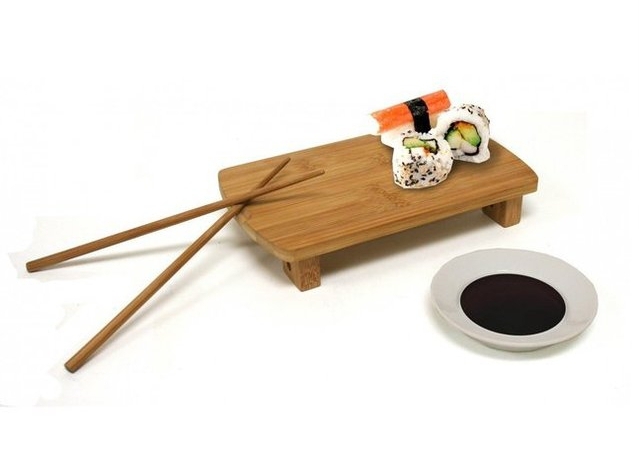 Traditional chopsticks for sushi( hashi) appeared in Japan around 300 AD and were borrowed from the Chinese. Initially they resembled tongs( made of split bamboo trunk) with stitched halves.
Traditional chopsticks for sushi( hashi) appeared in Japan around 300 AD and were borrowed from the Chinese. Initially they resembled tongs( made of split bamboo trunk) with stitched halves.
- Two centuries later, there were separate sticks, which came into use only the highest nobility. Commoners at that time ate with their hands. The custom of using chopsticks during the meal spread to all segments of the Japanese population from around 700 AD.
- Because virtuosic possession of chopsticks is an excellent training of fine motor skills, directly related to the development of intelligence, Japanese children are beginning to adhere to this art from the age of one year. There is evidence that the development of babies using Hasi during meals is more rapid than the development of their peers who eat with spoons.
- A true Japanese will never allow an outsider to use his own chopsticks, since this cutlery belongs to the category of purely personal items.
- According to the ancient belief, Hasi are able to bring longevity and prosperity to their master, therefore they are a fairly common and desired gift. Handing the wand to the newlyweds, they are accompanied by the desire to be as inseparable as a pair of these sticks.
- When exactly one hundred days pass after the birth of a Japanese child, the obligatory ceremony "First sticks" is held for him, during which he receives the first set of chasi sticks in his life and with their help tries rice himself.
What are the sticks for sushi?
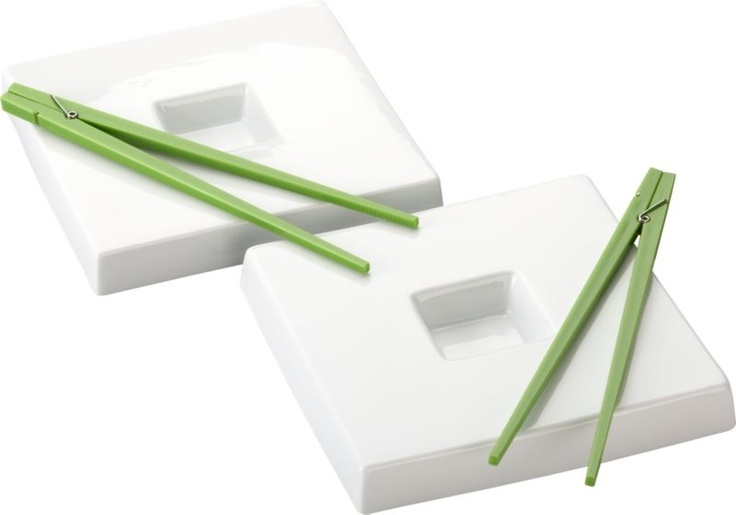
- Nouribashi( as in Japan called reusable sticks) amaze with a variety of sizes and shapes. Their cross section is often square or round, and the point is pyramidal or conical.
- They are plastic, metal, bone and wooden. Maplewood, pine, cypress, bamboo, sandalwood and plum are used for making wooden sticks.
- Often, nouribashi sticks are decorated by applying a beautiful ornament and making inserts from mother-of-pearl. Such products may represent a certain artistic value.
- In recent years, many Japanese restaurants have started using varibasi - so-called disposable sticks, packed in a sealed paper bag with a restaurant logo. Particularly beautiful packages often become exhibits of collections. Sticks in such packages are fastened together: this is done so that the visitor is sure that nobody used this kit before him.
- Asians are so familiar with sushi sticks that they serve them not only for transporting food to the mouth. Using sticks, they easily grind and cut food into smaller pieces, and also used to mix different sauces.
How to keep sushi sticks?
To properly use chopsticks, you need to learn how to properly hold them. First, let's try to learn the very principle of their retention.
- Press fingers against each other, which will create a fixed base for supporting the rods( pinky and nameless).The middle and index over them stretch forward a little.
-
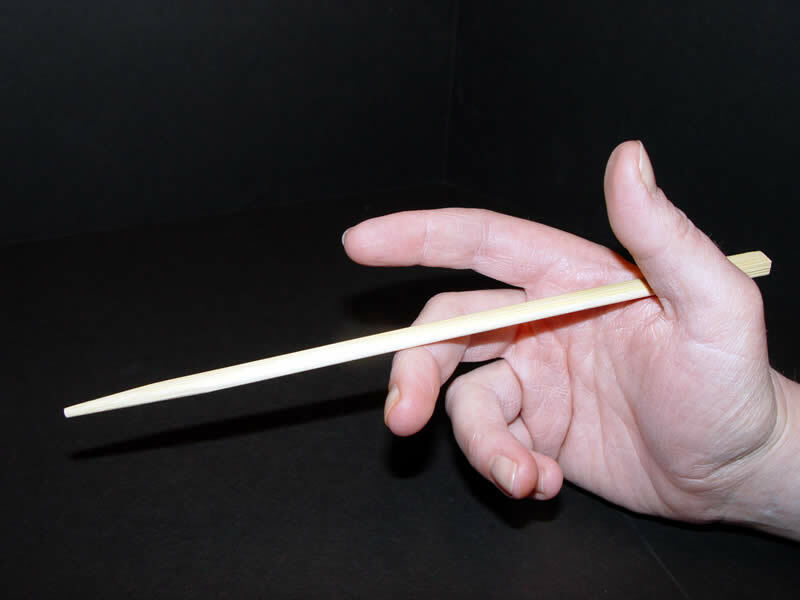 Place the thick upper end of the lower stick under the thumb so that its opposite thin end rests on the middle finger, or, on convenience, on the ring finger( in the nail phalanx).At the same time, the upper end should protrude a quarter from the edge of the brush holding the stick.
Place the thick upper end of the lower stick under the thumb so that its opposite thin end rests on the middle finger, or, on convenience, on the ring finger( in the nail phalanx).At the same time, the upper end should protrude a quarter from the edge of the brush holding the stick. -
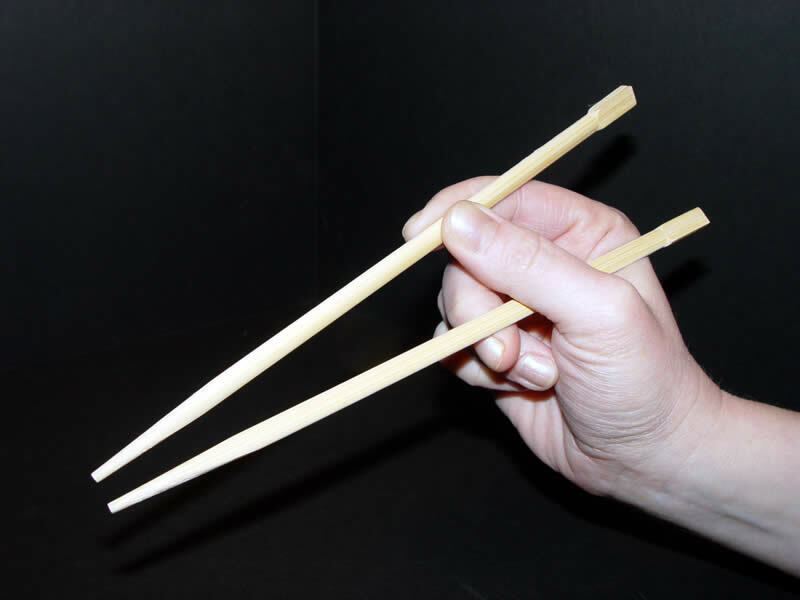 Place the thick end of the upper stick( in the area of 1/3 of its length) on the index finger. The tip of the thumb fixes the stick, holding it on the index finger in the area of the nail phalanx. Around so we hold a pencil.
Place the thick end of the upper stick( in the area of 1/3 of its length) on the index finger. The tip of the thumb fixes the stick, holding it on the index finger in the area of the nail phalanx. Around so we hold a pencil.
During food, the lower stick maintains its passive position, and the food is captured by manipulations performed by the upper rod. Straining the index and middle fingers, the sticks move apart and wrap around a piece of food. Bending fingers, close the sticks, fix the captured piece in them and bring it to the mouth. Keep the chopsticks in line, without straining your hand. The brush should be relaxed, and the finger movements - plastic and laid-back. 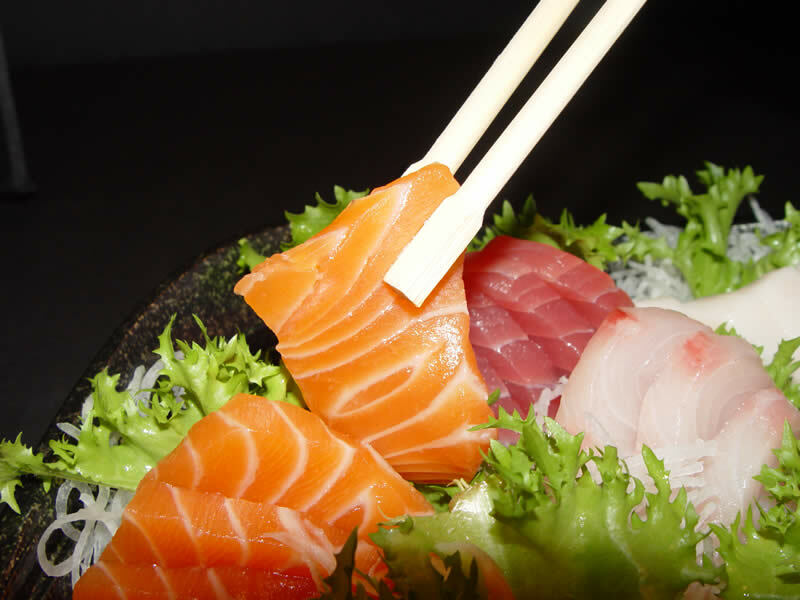 Going to an oriental restaurant and wanting to impress the connoisseur of exotic cuisine who knows how to masterfully use chopsticks for sushi, it will not be out of place to practice at home. You can just try to grab a pea or corn grains with chopsticks, or you can combine business with pleasure and eat with them a certain amount of cherry or sweet cherry. If, however, you do not suffer from excessive ambitiousness and do not hide from others that you do not know how to properly keep a crafty device, you can ask the waiter to bring for you training sticks, connected by a kind of spring. Thus, you will kill two birds with one stone: and go without any problems( beginners are much more comfortable with such chopsticks) and get acquainted with the culture of the national Japanese meal.
Going to an oriental restaurant and wanting to impress the connoisseur of exotic cuisine who knows how to masterfully use chopsticks for sushi, it will not be out of place to practice at home. You can just try to grab a pea or corn grains with chopsticks, or you can combine business with pleasure and eat with them a certain amount of cherry or sweet cherry. If, however, you do not suffer from excessive ambitiousness and do not hide from others that you do not know how to properly keep a crafty device, you can ask the waiter to bring for you training sticks, connected by a kind of spring. Thus, you will kill two birds with one stone: and go without any problems( beginners are much more comfortable with such chopsticks) and get acquainted with the culture of the national Japanese meal.
Subtlety of etiquette
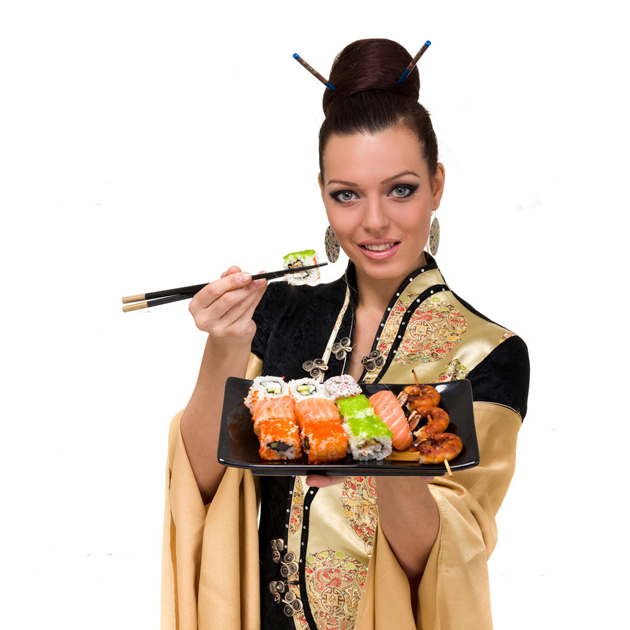 Over many centuries of using sticks for sushi, the ritual of eating has overgrown a large number of customs and rules. Different nations have etiquette for their national characteristics, but there are many similarities in common. The fundamental principle is a particularly respectful attitude to this tableware as a sacred symbol. That's why chopsticks can only take food, shifting it into your bowl or transporting it into your mouth. All other actions are considered an unacceptable violation of etiquette.
Over many centuries of using sticks for sushi, the ritual of eating has overgrown a large number of customs and rules. Different nations have etiquette for their national characteristics, but there are many similarities in common. The fundamental principle is a particularly respectful attitude to this tableware as a sacred symbol. That's why chopsticks can only take food, shifting it into your bowl or transporting it into your mouth. All other actions are considered an unacceptable violation of etiquette.
Indecently:
- Attract the attention of the waiter, tapping the sticks on the items on the table.
- Use sticks as a pencil, "drawing" them on the tablecloth.
- Make chopsticks that remind walking and allow them to "wander" inside the dish.
- Rummage with chopsticks in a plate, looking for the best pieces. Food is always taken from above.
In all restaurants of Oriental cuisine is unacceptable:
- Take food, sticking it on sticks.
- Put the bitten piece back on the plate: everything that you took with chopsticks, you must immediately send in your mouth.
- Cool food by vigorously waving the varibasi with chopsticks.
- Point with chopsticks at someone.
- Put the varibasi in your mouth and hold them there for no reason.
- Licking varibasi and waving them.
- Move the dishes using the chopsticks. Any dishes and cutlery should be taken by hand.
- Place the sticks upright, sticking them into food. The fact is that in the East similarly set aromatic sticks, dedicated to the dead.
What not to do while being in the Japanese restaurant
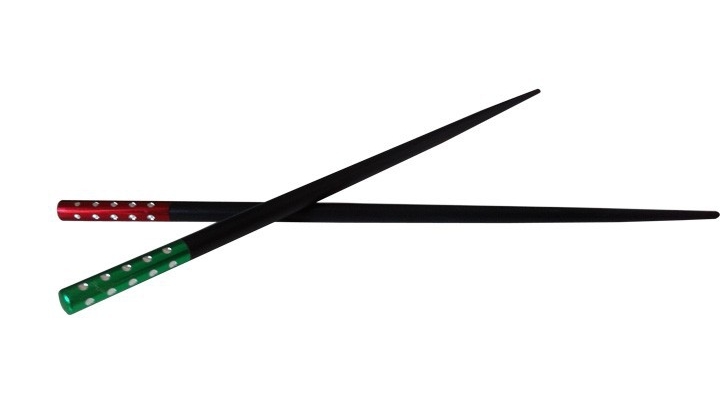
- Do not ever squeeze your hand from the varibasi into a fist: this is considered a threat from the Japanese.
- Relocating food with your chopsticks in someone else's plate or transferring food from one sticks to another refers to the strictest taboo gestures. In Japan, this action is used during the ritual of shifting the bones of a cremated person into a funeral urn. It is carried out by close relatives of the deceased.
Video instruction on how to properly use chopsticks
Related videos:
 8:32
8:32  1:03
1:03 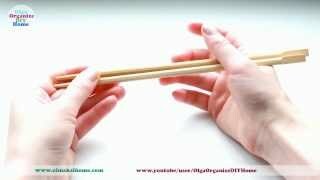 1:43
1:43 